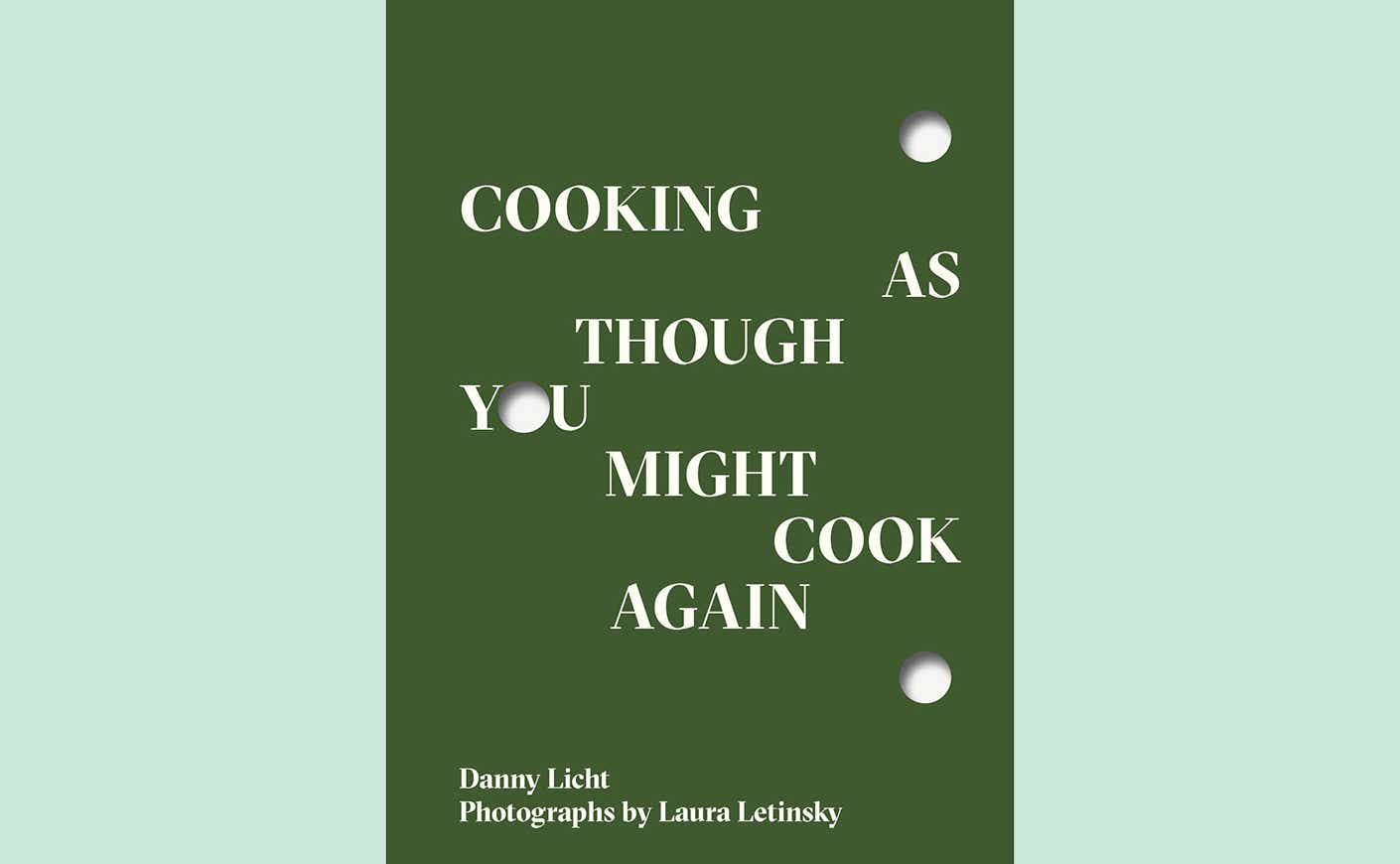Below is an excerpt from Danny Licht’s latest book, Cooking As Though You Might Cook Again.
A Pot of Beans
Cooking for me often begins in the pantry, where I find beans. I like beans and regret that they are not given a chance by so many. They are too humble to be seen, too small for common fantasy. It should not be this way. Beans are nutritious, delicious, versatile, and cheap, glamorous in their little way. I am at peace when I know I have a pot of beans in the fridge, ready to make into lunch.
When I cook beans, I cook too many. I do this on purpose. I start with a pound of dried beans—cannellini, navy, kidney, or cranberry, though every bean has its appeal. I sort through them for small stones and soak them in water, covered by a few inches, overnight. A pound of beans will make more than four servings and fewer than ten. I like this kind of ambiguity in cooking. It pushes me to keep an open mind, and to err on the side of excess. I like excess in cooking because I like dealing with the consequences.
Soaking the beans in advance of cooking is not strictly necessary, but I have found that doing so makes them more easily digestible, in addition to decreasing their cooking time. When I don’t have the foresight, I boil the beans for a few minutes, and then remove the pot from the heat, cover it with a lid, and let the beans sit in the hot water for an hour.
After the beans have soaked, I drain them in a colander, return them to the pot, and cover them again with a few inches of fresh water. This is the liquid they will cook in, and so it should be made flavorful. An onion halved and added to the pot is good, and so are whole peeled cloves of garlic. I like to add a halved jalapeno or a seeded dried chili, bay leaves, and whatever herbs I have on hand; rosemary, thyme, and sage are all good. Lately I have particularly liked using a handful of mint. The important thing to keep in mind when filling the pot is that the beans will taste good regardless of what else goes in, even with nothing added, so long as they are cooked through and seasoned with salt at the end of cooking; salting too early prevents their softening. I add to the pot whatever is around and sounds good. I bring the pot to a boil, reduce it to a simmer, and stir it occasionally.
Probably you will want to know how long the beans will take to cook. It is a normal, obvious question yet difficult to answer directly. The truth is that I don’t really know how long anything takes to cook. No one does, and no recipe can tell you. Given that the production of the earth is variable, and so are ovens and so are stoves, not to mention the tastes of individuals, any cooking time is always a suggested cooking time. I can tell you that soaked dried beans take about an hour to cook, but they can take anywhere from half an hour to two hours depending on the age of the beans, the qualities of the water, the intensity of the flame, and so on. In the end, the only relevant rule here is that things should be cooked until they are done.
After half an hour of cooking, try a bean and decide for yourself if it is done. When I started cooking Italian food, I assumed that everything was meant to be cooked until it still had a bite, like pasta.Then I went to Italy and learned that Italians tend to cook vegetables until they are very soft. This surprised and challenged me. I had taken al dente to be a rule for all things; I should have known better. At the time, this discovery disoriented me, but I have since come to embrace the tenderness of Italian cooking. Like much else, it is just a preference, and partly a gastrointestinal one, but I like to cook beans until they are very soft yet still composed.












